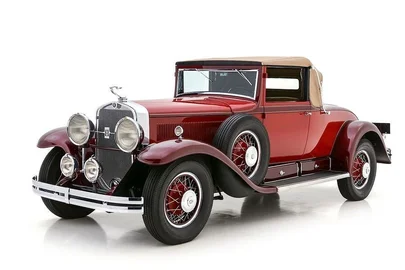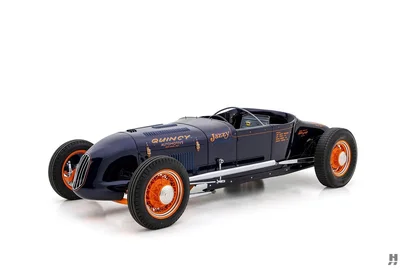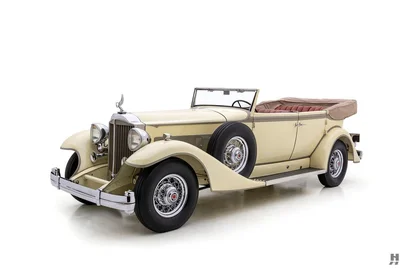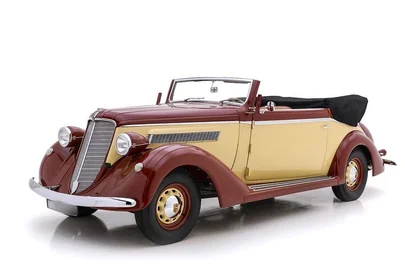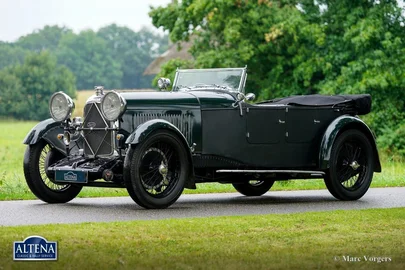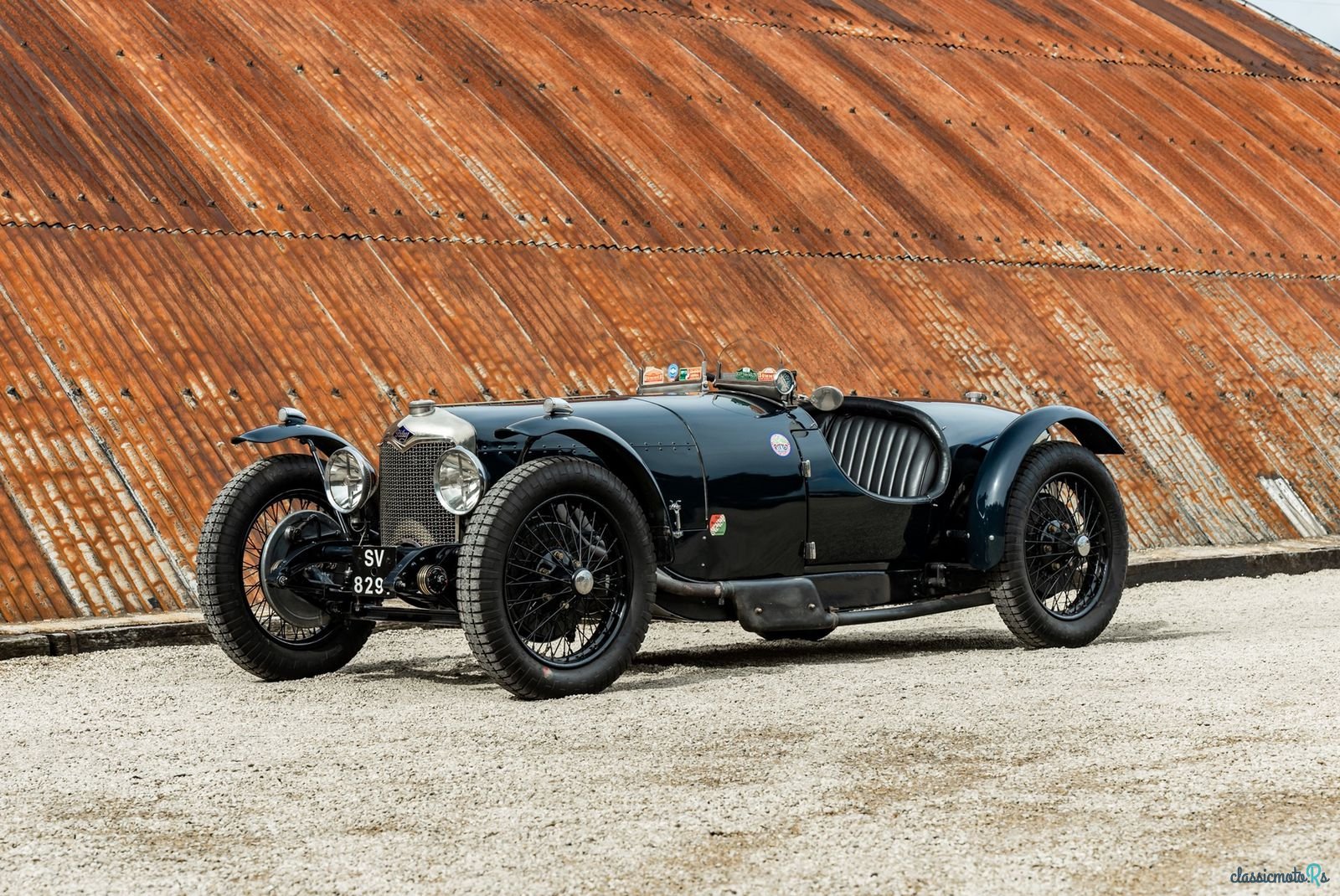
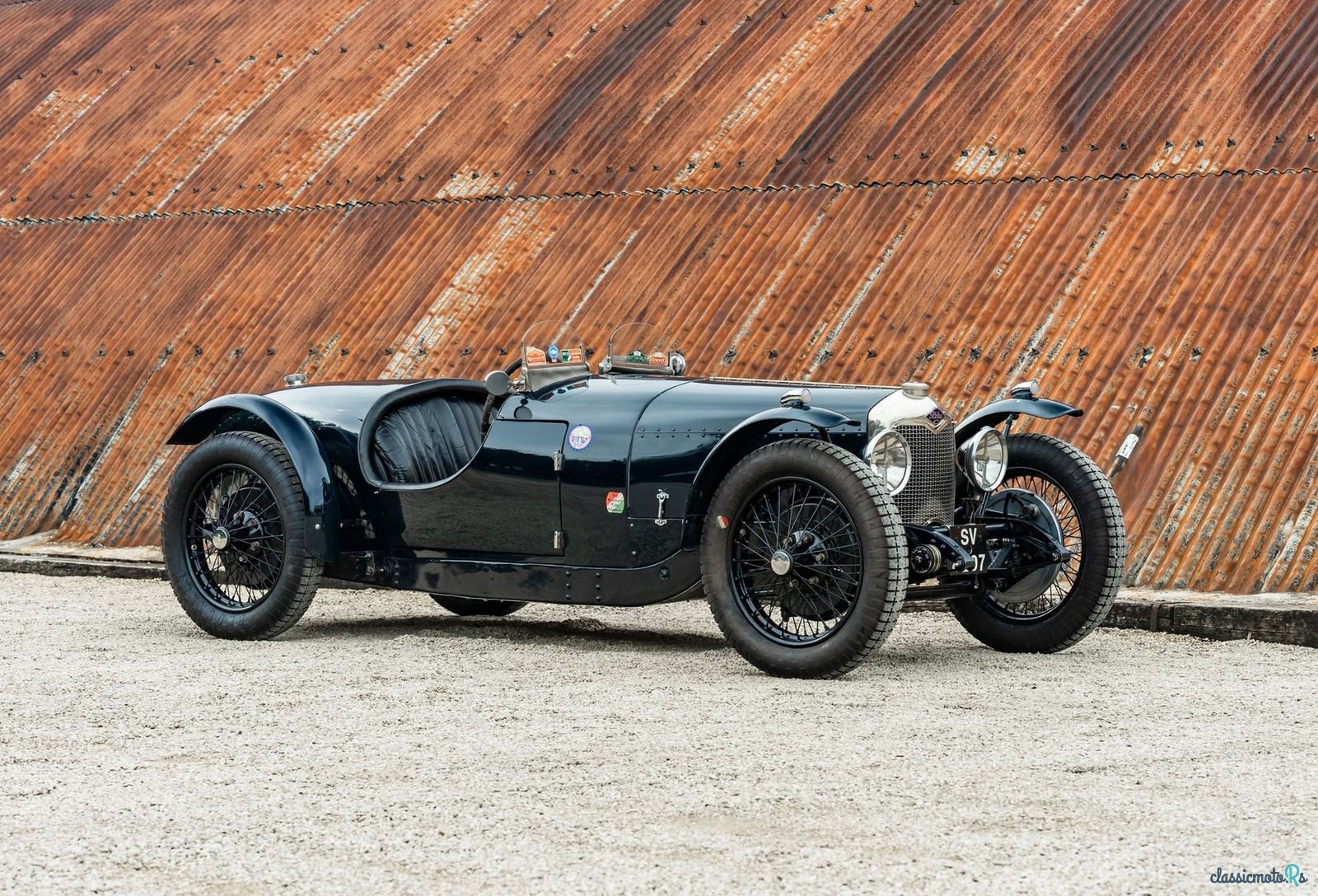
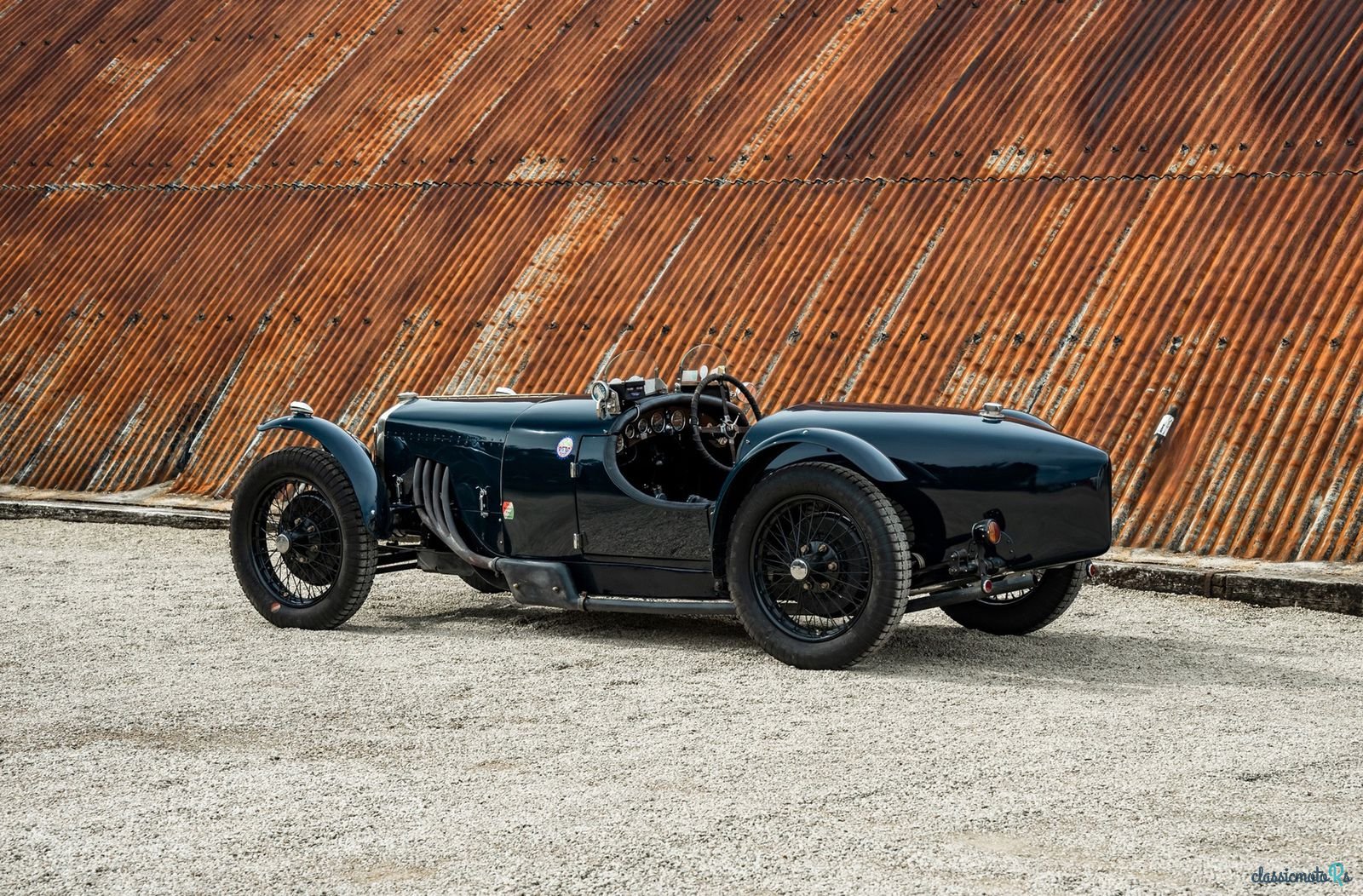
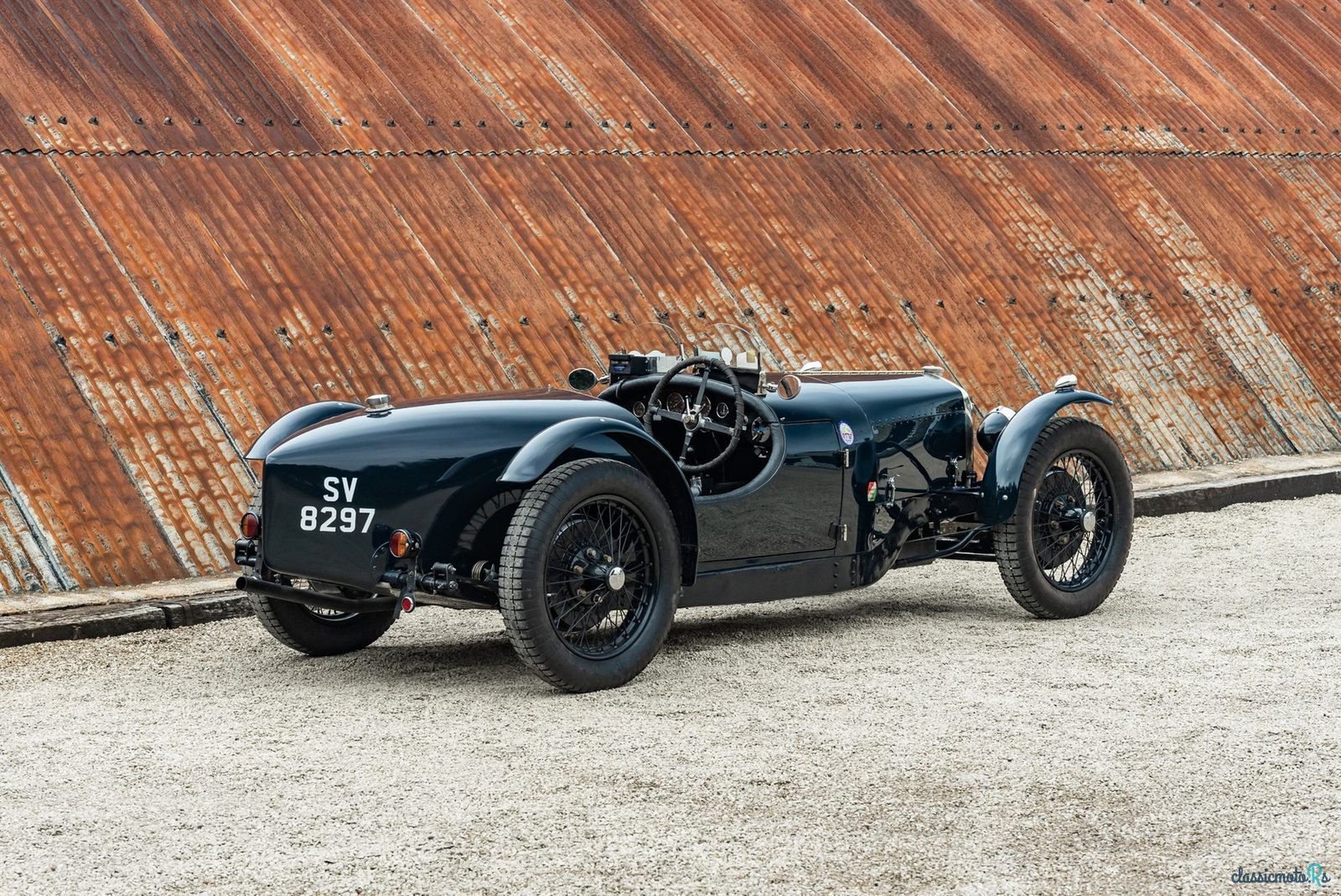
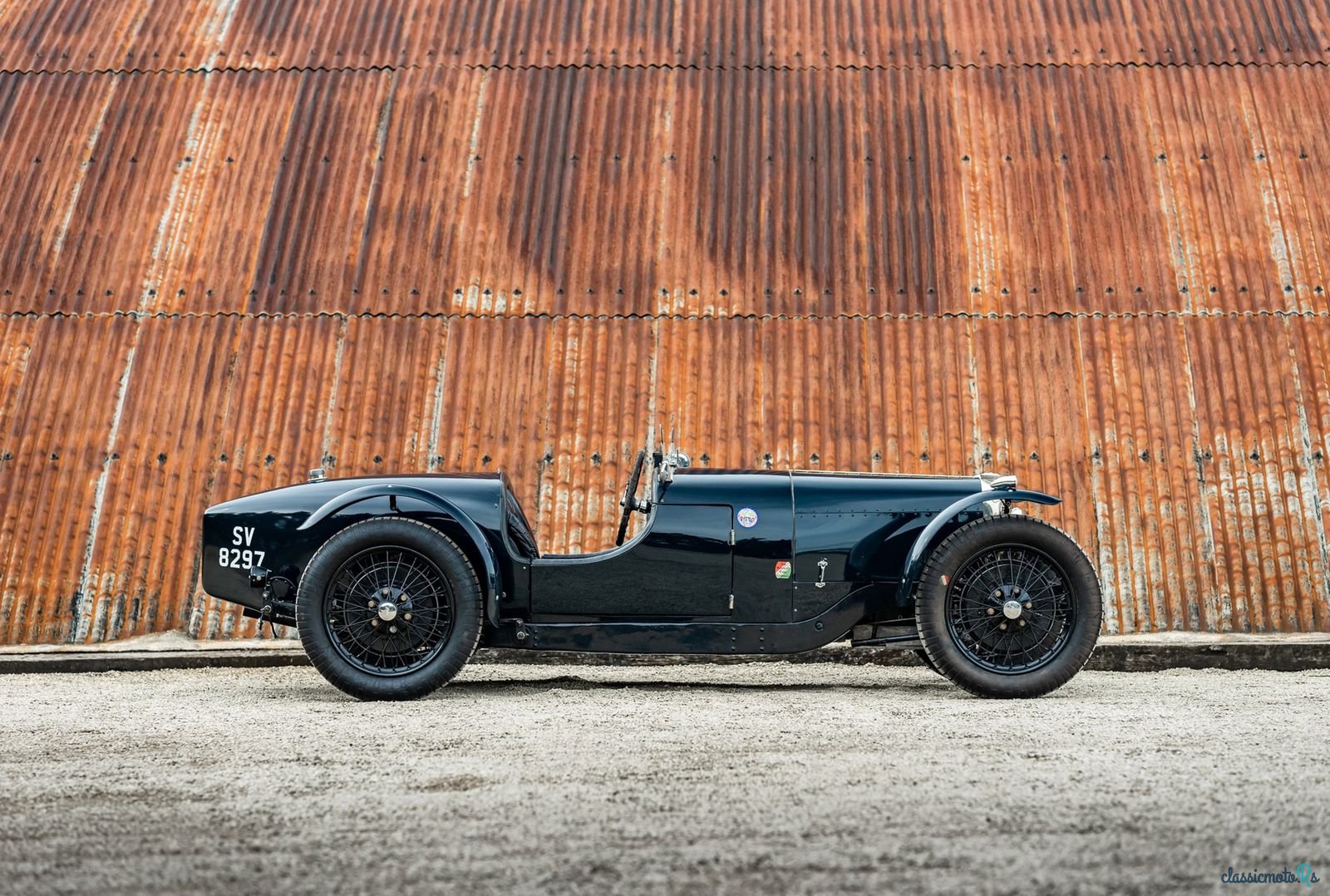
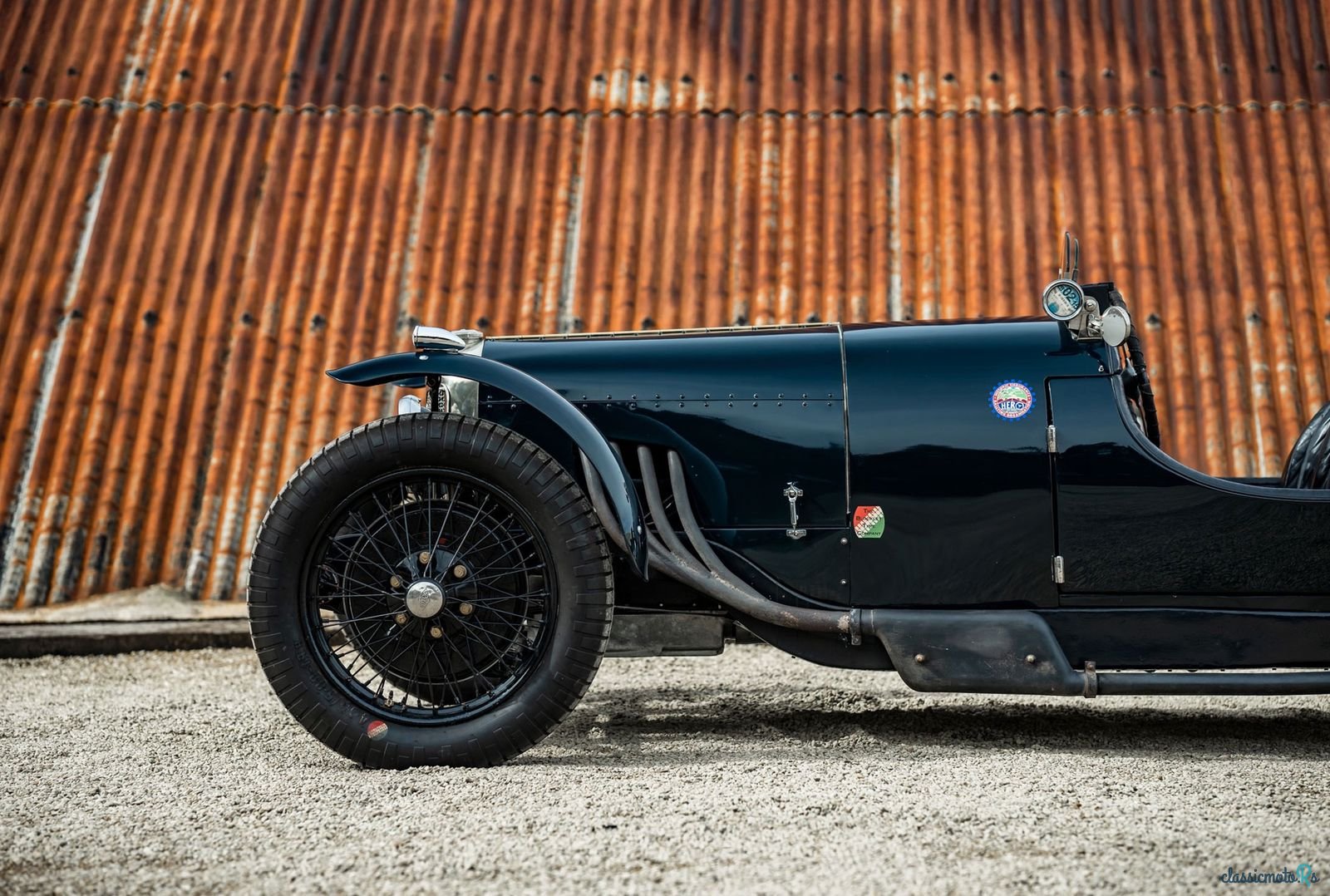
6 photos
1930' Riley Brooklands
Report This Ad!Rate This!Bookmark This
£145,000Published 2 May 2023ID: 42koS9
Expired
2 years, 7 months ago
2 years, 7 months ago
Information from the owner
Body: Sports Car
Age: 93 years
Seller's comments about 1930' Riley Brooklands
- Exported to Australia during the 1930s
- Raced in the 1939 Australian Grand Prix
- Fully restored in the late 1990s and used on the Mille Miglia
This rare Riley 9 Brooklands was exported to Australia in 1936. The Coventry marque was a popular choice of racer in that country and Bill Thompson had driven a Brooklands model to victory in the 1933 Australian Grand Prix at Phillip Island, beating the Bugatti Type 37 of Harold Drake-Richmond.
Sadly, little is known of this Riley’s very early history, although a note in the history file suggests that chassis number 8083 was built in 1930 as part of a batch of frames that were produced by the famous engineering firm Thomson & Taylor Ltd. The same note suggests that it might have been retained by Riley as a development car.
It’s thought to have been exported to Australia by Dr Cliff Downing, founder of the Sporting Car Club of South Australia. It was later entered in the 1939 Australian Grand Prix, which was held on the daunting Lobethal road circuit near Adelaide. Downing shared the Riley with Alan Sinclair but they failed to finish.
Later in 1939, the car was sold to Tom Jackson, who owned a garage business. It was raced for him by successful speedway rider Aub Ramsey before being sold to Albert Edwin ‘Alby’ Lobb. Often described as being a ‘colourful character’, Lobb kept the Riley until the late 1960s and often raced it during the early part of his ownership.
The next custodian was Neville Webb, who later agreed to sell the Brooklands and a Riley Imp to Jim Runciman for $8000. Before Runciman could pick them up, however, Webb sold them to another buyer and Runciman instead had to do a separate deal with him – which cost an extra $2000…
Runciman owned the Riley from 1975 until the early 1990s, when it was exported back to the UK in need of restoration. In 1998, it was acquired by Erwin Koster Kristensen in Denmark and he set about rebuilding it to original specification. A new body was made and, once the car was completed, Kristensen used it on the 2005 Mille Miglia.
He kept the Riley until 2011, when it was sold to the HERO rally organisation. Tomas de Vargas Machuca drove it on the London-Lisbon Rally, a trip that he described as being ‘an epic adventure’. It finished second in class on that event in 2013 and was subsequently used on rallies such as the Scottish Malts, Summer Trial and 1000 Mile Trial.
Now being offered for sale at The Classic Motor Hub, this Riley Brooklands is a very well-sorted vintage sports car and is eligible for a number of major international events. It is wearing Blockley tyres all round and is fitted with a rally tripmeter, ready for its new custodian to take it on its next adventure.
MODEL HISTORY
The Riley 9 was a landmark model for the Coventry-based marque and was one of the most popular small cars of its time. Its 1087cc, twin-camshaft, four-cylinder engine was of particular interest to racing driver and former Land Speed Record holder JG Parry-Thomas.
At the time, the 1100cc class of motorsport was keenly contested, and Parry-Thomas – along with Reid Railton – development a racing chassis in which to place the Riley engine. After Thomson & Taylor had carried out further development on the chassis, Riley built a short run of Speed Models – better known as the Brooklands.
The wheelbase was more than 10 inches shorter than on the standard Riley 9, while the engine benefitted from high-compression pistons, different camshafts, a four-branch exhaust manifold and twin carburettors.
With its low centre of gravity, fine handling and superb engine, the Riley Brooklands proved to be a popular choice for motor racing and was extremely competitive against its Class G 1100cc rivals from the continent. Among its numerous competition successes were a one-two result in the 1932 Ulster Tourist Trophy and winning the Index of Performance in the 1934 Le Mans 24 Hours.
Only 110 Brooklands Speed Models were built between 1928 and 1932, making it a rare and extremely desirable pre-war sports car from a venerable company that had as its motto: ‘As old as the industry, as modern as the hour.’
- Raced in the 1939 Australian Grand Prix
- Fully restored in the late 1990s and used on the Mille Miglia
This rare Riley 9 Brooklands was exported to Australia in 1936. The Coventry marque was a popular choice of racer in that country and Bill Thompson had driven a Brooklands model to victory in the 1933 Australian Grand Prix at Phillip Island, beating the Bugatti Type 37 of Harold Drake-Richmond.
Sadly, little is known of this Riley’s very early history, although a note in the history file suggests that chassis number 8083 was built in 1930 as part of a batch of frames that were produced by the famous engineering firm Thomson & Taylor Ltd. The same note suggests that it might have been retained by Riley as a development car.
It’s thought to have been exported to Australia by Dr Cliff Downing, founder of the Sporting Car Club of South Australia. It was later entered in the 1939 Australian Grand Prix, which was held on the daunting Lobethal road circuit near Adelaide. Downing shared the Riley with Alan Sinclair but they failed to finish.
Later in 1939, the car was sold to Tom Jackson, who owned a garage business. It was raced for him by successful speedway rider Aub Ramsey before being sold to Albert Edwin ‘Alby’ Lobb. Often described as being a ‘colourful character’, Lobb kept the Riley until the late 1960s and often raced it during the early part of his ownership.
The next custodian was Neville Webb, who later agreed to sell the Brooklands and a Riley Imp to Jim Runciman for $8000. Before Runciman could pick them up, however, Webb sold them to another buyer and Runciman instead had to do a separate deal with him – which cost an extra $2000…
Runciman owned the Riley from 1975 until the early 1990s, when it was exported back to the UK in need of restoration. In 1998, it was acquired by Erwin Koster Kristensen in Denmark and he set about rebuilding it to original specification. A new body was made and, once the car was completed, Kristensen used it on the 2005 Mille Miglia.
He kept the Riley until 2011, when it was sold to the HERO rally organisation. Tomas de Vargas Machuca drove it on the London-Lisbon Rally, a trip that he described as being ‘an epic adventure’. It finished second in class on that event in 2013 and was subsequently used on rallies such as the Scottish Malts, Summer Trial and 1000 Mile Trial.
Now being offered for sale at The Classic Motor Hub, this Riley Brooklands is a very well-sorted vintage sports car and is eligible for a number of major international events. It is wearing Blockley tyres all round and is fitted with a rally tripmeter, ready for its new custodian to take it on its next adventure.
MODEL HISTORY
The Riley 9 was a landmark model for the Coventry-based marque and was one of the most popular small cars of its time. Its 1087cc, twin-camshaft, four-cylinder engine was of particular interest to racing driver and former Land Speed Record holder JG Parry-Thomas.
At the time, the 1100cc class of motorsport was keenly contested, and Parry-Thomas – along with Reid Railton – development a racing chassis in which to place the Riley engine. After Thomson & Taylor had carried out further development on the chassis, Riley built a short run of Speed Models – better known as the Brooklands.
The wheelbase was more than 10 inches shorter than on the standard Riley 9, while the engine benefitted from high-compression pistons, different camshafts, a four-branch exhaust manifold and twin carburettors.
With its low centre of gravity, fine handling and superb engine, the Riley Brooklands proved to be a popular choice for motor racing and was extremely competitive against its Class G 1100cc rivals from the continent. Among its numerous competition successes were a one-two result in the 1932 Ulster Tourist Trophy and winning the Index of Performance in the 1934 Le Mans 24 Hours.
Only 110 Brooklands Speed Models were built between 1928 and 1932, making it a rare and extremely desirable pre-war sports car from a venerable company that had as its motto: ‘As old as the industry, as modern as the hour.’
